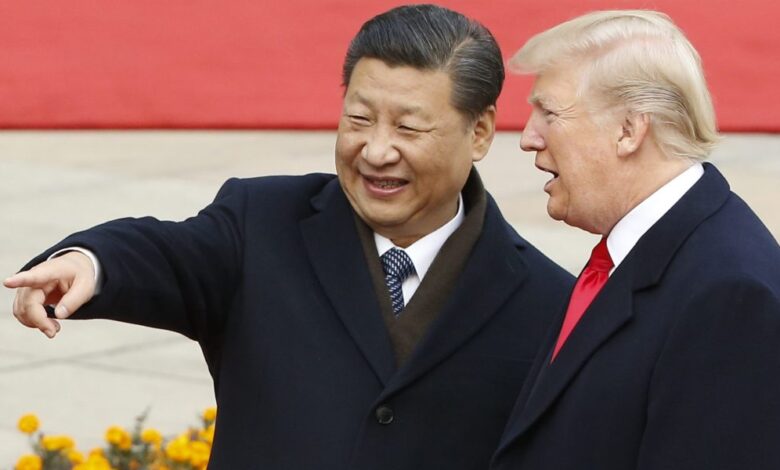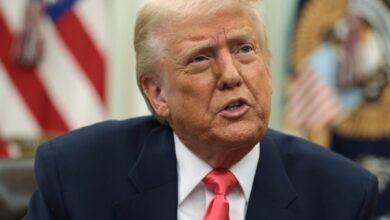China has options: The U.S. may be more dependent on trade with Asia than President Trump realizes


- In today’s CEO Daily: Nicholas Gordon, Fortune’s Asia Editor, on how the U.S. may be more dependent on trade with Asia than President Trump realizes.
- The big story: Fed chair Jerome Powell warns that Trump’s tariffs could lead to “higher inflation and slower growth.”
- The markets: U.S. down, Asia up, Europe struggling, but U.S. futures look sunny.
- Analyst notes from JPMorgan on the budget, Wedbush on Nvidia, Apollo on recession, and UBS on the trade war.
- Plus: All the news and watercooler chat from Fortune.
Good morning. Trump’s “Liberation Day” tariffs spared no country: U.S. allies, emerging markets, and even those countries that ran trade deficits with the U.S. all got hit. China has garnered much of the attention. But dig deeper and you’ll find a mix of confusion and disappointment among U.S. allies.
Japanese Prime Minister Shigeru Ishiba talks about needing to understand the “emotional elements” behind Trump’s views on trade. Australia is blasting the tariffs as having “no basis in logic” as some of its exporters step up trade with China. Lawrence Wong, prime minister of Singapore—perhaps the country that benefits most from free trade—now warns of a “more arbitrary, protectionist, and dangerous” world. Here are three things U.S. CEOs can expect to see from Asia as this trade war plays out.
China has options. The White House is arguing that China needs the U.S.’s giant consumer market more than the U.S. needs cheap Chinese manufacturing. But the reverse is likely true. U.S. retailers and manufacturers rely on Chinese (and, by extension, Asian) supply chains. Steep 145% tariffs will mean massive price hikes for U.S. consumers and increased costs for U.S.-based manufacturers. China will be hurt from losing the U.S. market, but Beijing is likely betting that Trump will be hurt more. They may be right: Trump exempted smartphones, laptops and other electronics from most of his China tariffs.
Asian countries may start to work closely together. Even as Asian leaders frantically fly to Washington to start trade negotiations, they’ve started to build relationships between each other. Malaysia Prime Minister Anwar Ibrahim is calling for ASEAN to take a united front in trade negotiations with the U.S. Xi Jinping is in the middle of a three-country tour of Southeast Asia. China, Japan and South Korea are talking about promoting trade. New Zealand is calling for a new rules-based trade bloc. Europe, too, is tentatively communicating more with China. Southeast Asia may now move towards “greater economic integration that it long aspired to, but was unmotivated to swim hard towards,” says Devadas Krishnadas, CEO of Future-Moves Group, a Singapore-based public policy consultancy.
Decoupling is coming—because the U.S. seems unreliable. A lot of countries in Asia really did pin their hopes on an open and stable U.S. Take Vietnam: It ran the third-largest trade surplus with the U.S. last year, behind China and Mexico, and relies on U.S.-bound exports for 30% of its GDP. Betting on the U.S. to be reasonable is a much less of a sure thing post-April 2. Even if Vietnam could get a deal, what evidence is there that Washington will stick with it? The China narrative has also changed. For years, China’s economy was slumping, its markets were uninvestable, and its “wolf warrior” diplomats undermined foreign policy. Now, China appears to be catching up in key sectors like EVs and AI. It looks like a bastion of stability in light of the U.S.’s policy flip-flops. Many countries would prefer not to choose between the U.S. and China. But if they are forced, they might not choose Washington.
More news below.
Contact CEO Daily via Diane Brady at diane.brady@fortune.com
This story was originally featured on Fortune.com
https://fortune.com/img-assets/wp-content/uploads/2025/02/GettyImages-871865920-e1739649153902.jpg?resize=1200,600
2025-04-17 08:44:06





